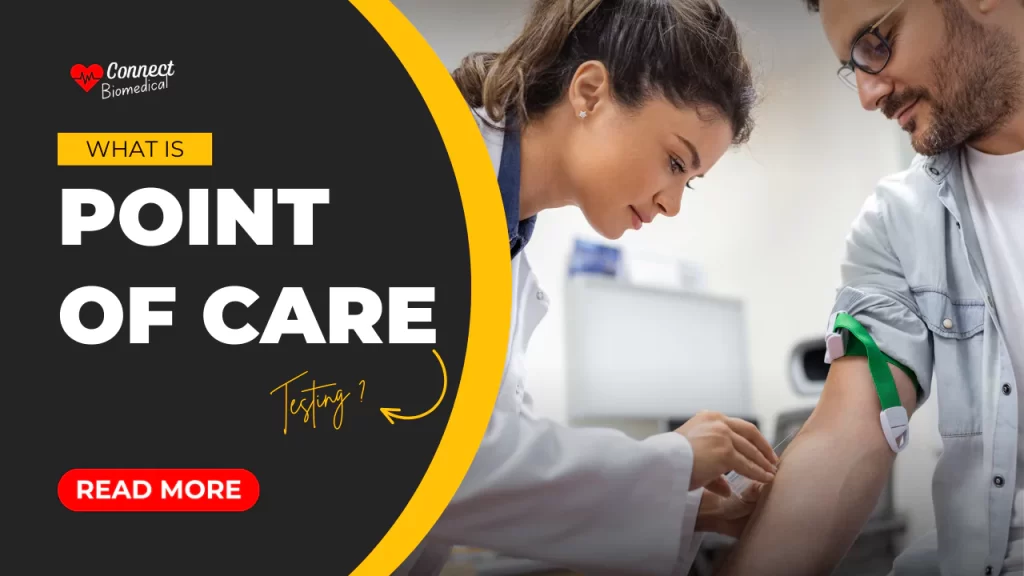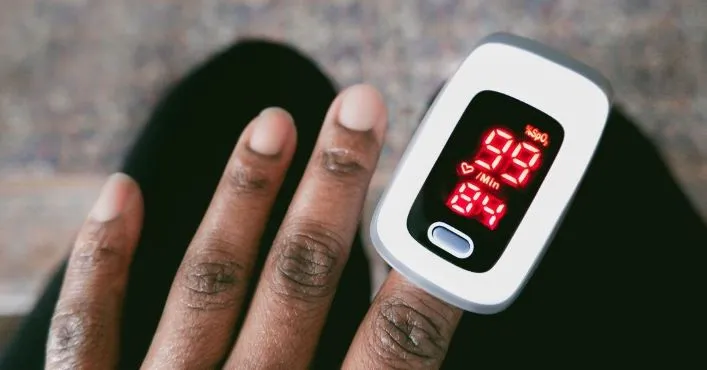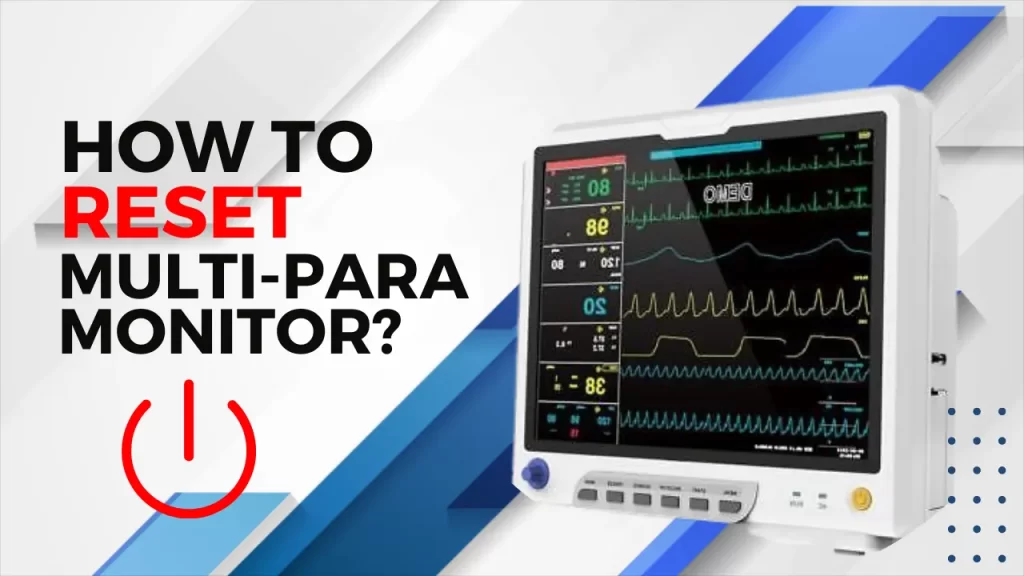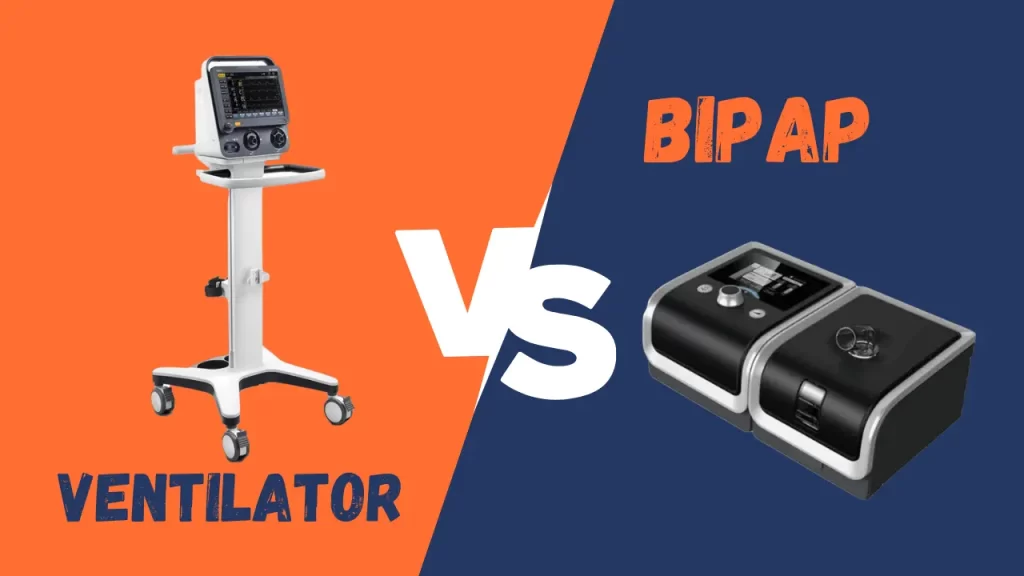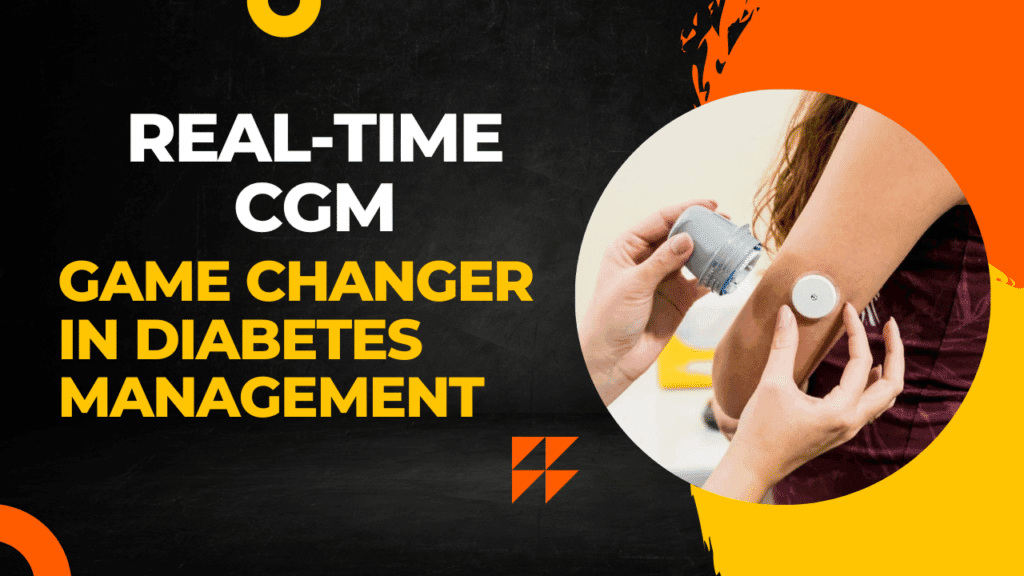Did you know that 96% of clinical testing facilities operate outside traditional hospitals now? That’s right – point of care testing has changed how healthcare teams deliver diagnostic services completely.
Point of care testing has become more significant for modern healthcare delivery, with over 131,000 physician offices licensed for testing. These rapid diagnostic tests at patient locations cut down result times by a lot, which leads to faster diagnosis and treatment decisions.
Point of care testing proved to be a great way to get insights during the COVID-19 pandemic and helped healthcare teams diagnose and contain virus spread quickly. These tests revolutionize patient care delivery everywhere – from emergency departments to home care settings and maybe even space missions.
Want to learn how point of care testing can improve your healthcare practice?
Let’s explore what you need to know about using and managing these vital diagnostic tools.
What is Point Of Care Testing?
Point of Care Testing (POCT) marks a transformation in medical diagnostic testing that brings laboratory capabilities right to patient care locations. POCT covers any medical diagnostic testing performed at or near the patient’s location, as defined by the International Standard ISO 22870.
Traditional laboratory testing is different from POCT in several ways. Standard testing sends specimens to a centralized laboratory with hours or days of waiting time. POCT gives results in minutes. The process eliminates many steps, especially transport and processing delays.
The testing devices fall into three main categories:
- Handheld devices like blood glucose meters and rapid test strips
- Portable analyzers for bedside testing
- Benchtop units that require dedicated space near patients
Each device works through specific testing methods that match their applications. Simple POCT employs test strips with impregnated carrier elements that interact with analytes. Advanced methods use lateral-flow testing with porous paper or cellulose fiber filters with capillary beds.
These technologies let healthcare providers use different bioassays such as microbiological culture, PCR, and ELISA right at the point of care.
Testing capabilities have grown significantly. They now include blood glucose monitoring, cardiac markers, infectious diseases, coagulation tests, and many more parameters. Today’s POCT devices need just a single drop of whole blood, urine, or saliva to provide results in minutes.
Technology breakthroughs, especially in electronics miniaturization and better instrumentation, have made POCT devices compact and precise. These advances help doctors make evidence-based medical decisions quickly to improve patient outcomes, especially during emergencies and life-threatening situations.
Key Testing Parameters of Point of care Testing
Blood glucose monitoring is the life-blood of point-of-care testing. It represents the largest segment of the European POCT market with €3bn in annual turnover. This testing helps both inpatient and outpatient care settings by providing quick results for diabetes management.
POCT devices now give cardiac marker results in just 20 minutes. This helps doctors quickly diagnose acute coronary syndromes. Modern cardiac devices use high-sensitivity troponin assays that can detect small cardiac events which traditional tests might miss.
POCT has changed how we detect and prevent infectious diseases. These devices are great at finding:
- HIV and hepatitis in primary care settings
- Malaria and dengue in areas with limited resources
- Influenza and other respiratory infections
- Streptococcus and mononucleosis through immunoassay-based testing
Point-of-care coagulation tests give a complete analysis of blood clotting factors. Doctors get a full picture of plasma clotting, thrombocyte function, and fibrinolysis through viscoelastic testing. This information is vital for patient care. Specific devices like ROTEM and Sonoclot provide detailed coagulation profiles.

The digital world of pregnancy and fertility testing has altered the map. These tests can accurately predict ovulation and help healthy fertile women conceive. POC pregnancy tests are a great way to get quick results, especially when you have time-sensitive treatment decisions.
Common Testing Locations
Point-of-care testing locations now extend beyond traditional hospital settings. Data shows that 96% of facilities performing licensed testing operate outside hospitals.
Emergency departments
Emergency departments employ point-of-care testing to speed up result delivery and improve patient care. Research shows that POCT cuts down emergency department result times by 51 minutes compared to central laboratory testing. Emergency teams can make quick treatment decisions instead of waiting hours for results, especially when immediate intervention becomes necessary.
Clinics and physician offices
Physician offices make up the largest segment of testing locations, with 131,238 licensed facilities. These settings get several benefits from POCT:
- Quick diagnosis and treatment planning
- Better patient experience with same-visit results
- Higher specimen quality through controlled handling
- Streamlined operations
Home care settings
Home-based point-of-care testing provides a cheaper and more convenient option than traditional medical visits. Patients can now run various tests on their own, from blood glucose monitoring to COVID-19 screening. This availability has made healthcare easier to manage for people with chronic conditions who need regular monitoring.
Pharmacies
Pharmacies have become vital POCT providers with 25,709 licensed testing facilities. Research shows that 90% of the U.S. population lives within 5 miles of a community pharmacy. This makes them perfect spots for available testing. Local pharmacies now provide detailed testing services, including blood pressure screening, cholesterol tests, and infectious disease screening.
Point-of-care testing locations continue to grow, reaching new settings like ambulances, military facilities, and even space missions. This growth helps diagnostic capabilities reach patients wherever they need care and supports quick medical decisions that lead to better health outcomes.
Quality Control Basics of PCOT
Quality control in point-of-care testing demands strict compliance with decades-old standards and protocols. The Clinical Laboratory Improvement Amendments (CLIA) designate tests as either waived or non-waived, with specific quality requirements for each category.
Staff training requirements
Staff must receive complete training to perform point-of-care testing effectively. Personnel who perform non-waived testing need specific educational qualifications – an Associate’s degree or higher for high complexity testing, and a high school diploma or higher for moderate complexity testing.
Staff competency assessment includes everything in these six procedures:
- Direct observation of routine patient testing
- Monitoring result recording and reporting
- Review of quality control records and maintenance documentation
- Assessment of instrument maintenance skills
- Testing performance evaluation using known samples
- Problem-solving skills assessment
Device maintenance
Regular device maintenance serves as the life-blood of quality assurance. Laboratory staff must perform and document maintenance based on manufacturer guidelines. Test complexity and associated risks determine quality control testing frequency – high-throughput devices need daily quality control checks. Staff must test new reagent lots with controls before using them on patient samples.
Result documentation of Point of care testing
Proper records are the foundations of result management. Point-of-care testing documentation must include:
- Test date and time
- Lot numbers of reagents used
- Operator identification
- Quality control results
Modern point-of-care devices come with electronic records, though some facilities still use traditional logbooks. Data management systems prevent untrained operators from accessing devices and ensure teams complete regular quality control.
Staff Roles and Training
Medical laboratory professionals lead point-of-care testing programs with their specialized expertise in quality management systems and regulatory compliance.
Who can perform Point of Care test?
Healthcare professionals from various backgrounds can conduct point-of-care testing if they meet specific qualifications. Licensed individuals performing POCT include:
- Medical assistants and nurses
- Respiratory therapists
- Radiology technicians
- Community pharmacists
- Physicians and dentists
Non-laboratory staff must have a high school diploma or equivalent to perform waived testing. Moderate complexity testing requires more stringent qualifications. Practitioners need either a two-year degree with four years of direct POCT experience or a four-year degree in biological, chemical, or medical laboratory science with two years of experience.
Required certifications
Test complexity and setting determine the certification requirements. Staff members must complete their original training and orientation on each test method for non-waived testing. Technical consultants supervise this process and focus on:
- Patient preparation techniques
- Sample collection procedures
- Equipment maintenance protocols
- Quality control measures
- Result interpretation guidelines
Beyond simple certifications, several specialized credentials are available. The Certified Point of Care Testing Professional (CPP) designation shows expertise in device selection, validation, and operator training. Pharmacy technicians can earn dedicated Point-of-Care Testing Certificates that demonstrate their competency in conducting tests and collecting specimens.
Medical laboratory professionals who serve as technical consultants must develop appropriate training programs. These programs cover standard operating procedures, quality control, and instrument maintenance. All testing personnel go through regular competency assessments to maintain their proficiency.
Result Management
The quality and safety of patient care depends on how well healthcare teams handle point-of-care test results. A good result management system should cover systematic recording, smooth integration, and standard interpretation protocols.
Recording test results
Healthcare providers must document every point-of-care test in detail. The essential information to record includes:
- Date and time of collection
- Testing site location
- Operator identification
- Reference ranges
- Internal control results
- Lot numbers to track
Data management systems protect against unauthorized access and ensure proper documentation throughout the testing process. These systems help reduce manual transcription errors and streamline billing processes.
Integration with medical records
Healthcare teams can access patient data immediately when point-of-care test results integrate electronically with medical records. The Electronic Medical Record (EMR) displays results as soon as they’re generated, which helps teams make quick clinical decisions. This smooth connection reduces result turnaround times and cuts down documentation errors.
EMR integration helps pharmacists decide on medication doses based on current test results. Healthcare providers can monitor patient conditions better, and nurses can spot major changes to alert physicians right away.
Result interpretation guidelines
Teams must follow strict protocols for managing critical values. Healthcare providers need to act quickly and document both results and actions when point-of-care tests show critical values. These values must be reported even for patients who have shown critical results before.
Result interpretation relies heavily on data validation. Modern point-of-care systems automatically flag results outside analytical measurement ranges or reference intervals. This alert system helps teams handle abnormal results correctly while keeping patients safe.
Standard interpretation protocols ensure consistent result handling in different care settings. Healthcare teams can track quality metrics, create performance indicators, and follow regulations through electronic data management.
Ensuring Accurate Results
Getting accurate point-of-care test results depends on how carefully specimens are collected and handled. Research shows that 90% of quality problems in point-of-care testing come from steps before and after the actual testing.
Sample collection best practices
The accuracy of tests depends on how well specimens are handled. Healthcare teams need to follow these steps for blood samples:
- Get rid of air bubbles right after collection to avoid wrong blood gas measurements
- Mix samples gently by turning them over five times and rolling them between palms for five seconds
- Make sure collection tubes are filled to levels specified by manufacturers to keep anticoagulant ratios right
- Use the right amount of heparin because too much can change pCO2, pO2, and calcium ion values
Time matters a lot when keeping specimens intact. Teams need to analyze whole blood samples quickly because they keep metabolizing after collection. Blood gas analysis needs anaerobic conditions to get accurate lab values.
Common testing errors to avoid
Most testing problems happen before analysis, and hemolyzed specimens make up 54% of these errors. Healthcare teams should watch out for these common mistakes:
Bad blood drawing technique is one of the biggest problems. When staff squeeze or milk the puncture site, tissue fluid can contaminate samples and cause hemolysis. This interference can lead to higher potassium, troponin, and pCO2 levels.
Storage can affect test accuracy too. Glucose test strips work differently when exposed to air, light, or humidity. Blood gas samples in plastic syringes show faster drops in pO2 values than other materials.
Healthcare facilities should create standard operating procedures that spell out best practices for each point-of-care test to reduce these errors. Staff training works – studies show that more experienced operators make fewer pre-analysis mistakes. Healthcare teams can get reliable test results that help patient care by using proper techniques and careful quality control.
Conclusion
Point-of-care testing has revolutionized healthcare delivery by providing rapid and available diagnostic capabilities. Medical teams perform essential tests right at patient locations. This approach significantly reduces result turnaround times and enables quicker clinical decisions.
The testing capabilities now go beyond basic blood glucose monitoring. Healthcare providers can perform sophisticated cardiac marker tests, screen for infectious diseases, and conduct coagulation testing. Each healthcare facility’s quality control measures and staff training programs must remain rigorous to ensure result accuracy.
Better patient outcomes depend on proper specimen handling and result documentation. The healthcare team’s success relies on following testing protocols carefully. Electronic medical record integration plays a vital role in the process, and quality management systems help maintain high standards consistently.
FAQs
Q1. How does point-of-care testing differ from traditional laboratory testing?
Unlike traditional lab testing, which involves sending samples to a centralized facility, point-of-care testing provides results much faster, often within minutes. It eliminates delays associated with sample transport and processing, allowing for immediate clinical decisions.
Q2. What types of tests can be performed using point-of-care devices?
Point-of-care devices can perform a wide range of tests, including blood glucose monitoring, cardiac marker analysis, infectious disease screening, coagulation tests, and pregnancy/fertility testing. These tests often require only small sample volumes and deliver quick results.
Q3. Who can perform point-of-care testing?
Various healthcare professionals can conduct point-of-care testing, including medical assistants, nurses, respiratory therapists, pharmacists, and physicians. However, specific qualifications and training are required depending on the complexity of the test being performed.
Q4. How is the accuracy of point-of-care testing ensured?
Accuracy in point-of-care testing is maintained through proper staff training, regular device maintenance, adherence to quality control protocols, and careful attention to sample collection and handling procedures. Additionally, integration with electronic medical records and standardized result interpretation guidelines help ensure reliable outcomes.

